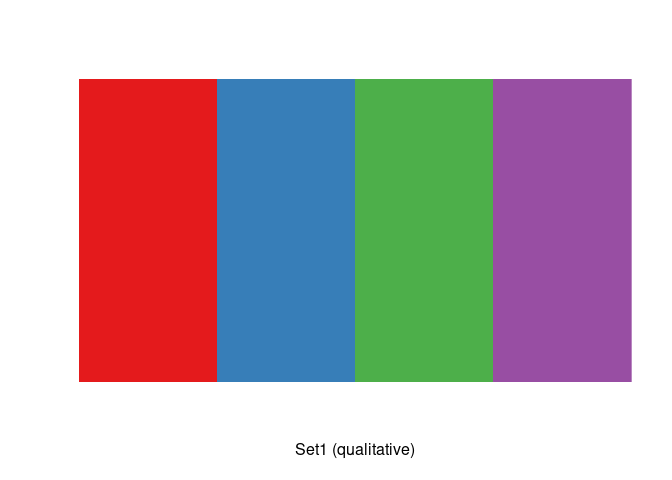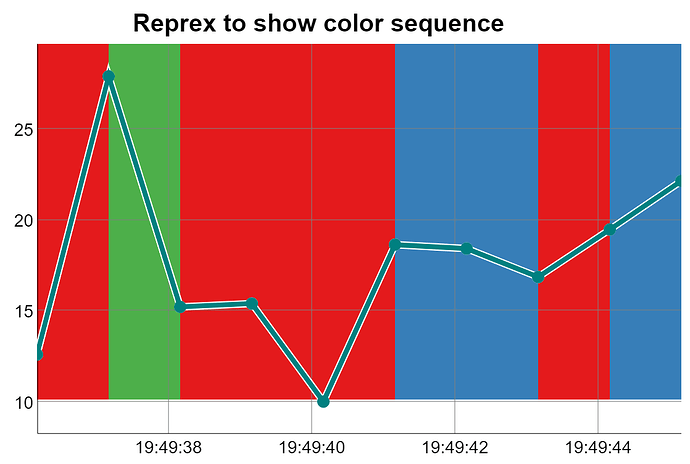Update on May 21: Due to no response I have posted this on stackoverflow also.
Consider this reprex. Pay attention to the sequence of colors, as that is the question I have.
Q1. Why do we need 4 colors for a 3 ribbon display? The first one is always ignored.
Q2. How is the sequence of the color palette assigned? It is not per the numerical order.
library(data.table)
library(dygraphs)
library(RColorBrewer)
library(dplyr)
set.seed(12)
# create data
dt1 <- data.table(t = seq(Sys.time(),by = "1 sec", length.out = 10),
y = rnorm(10,20,5))
# add a column with 3 possible values to be used for dyRibbon
dt1[,flag1:=factor(dplyr::case_when(y>22 ~ "high",y>18 ~ "med", T ~ "low"))]
dt1[,rflagn:=as.numeric(flag1)]
# generate the dygraph with a 3 color ribbon
dyg1 <-
dt1 %>%
select(t,y) %>%
dygraph(main = "Reprex to show color sequence") %>%
dyOptions(drawPoints = T,pointSize = 5,drawGapEdgePoints = T,
strokeWidth = 4,strokeBorderWidth = 1) %>%
dyRibbon(dt1$rflagn/4,palette = brewer.pal(4,"Set1"))
# checkout the reprex graph paying attention to the sequence of colors
dyg1
# check the sequence of colors in the palette
display.brewer.pal(4,"Set1")

# check the actual values in first 10 rows
dt1
#> t y flag1 rflagn
#> 1: 2022-05-18 21:47:10 12.59716 low 2
#> 2: 2022-05-18 21:47:11 27.88585 high 1
#> 3: 2022-05-18 21:47:12 15.21628 low 2
#> 4: 2022-05-18 21:47:13 15.39997 low 2
#> 5: 2022-05-18 21:47:14 10.01179 low 2
#> 6: 2022-05-18 21:47:15 18.63852 med 3
#> 7: 2022-05-18 21:47:16 18.42326 med 3
#> 8: 2022-05-18 21:47:17 16.85872 low 2
#> 9: 2022-05-18 21:47:18 19.46768 med 3
#> 10: 2022-05-18 21:47:19 22.14007 high 1
Created on 2022-05-18 by the reprex package (v2.0.1)
